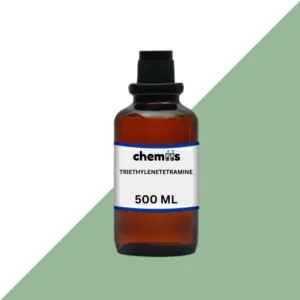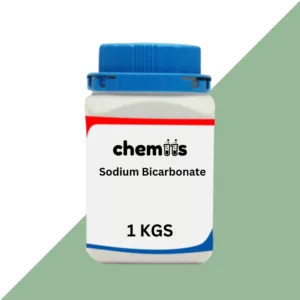Strontium Sulfate (SrSO₄) is an inorganic compound composed of strontium and sulfate ions. It is a white, odorless, crystalline solid that is insoluble in water and has a variety of industrial applications. Strontium sulfate is primarily used in the production of strontium-based compounds, as a white pigment in ceramics and paints, and in the oil and gas industry. It also finds applications in analytical chemistry and in the preparation of specialized glass products.
Applications:
1. Pigment and Paints:
- White Pigment in Ceramics and Paints: Strontium sulfate is used as a white pigment in the ceramics and paints industries. It helps to provide opacity, improve brightness, and enhance the whiteness of products. It is used in the production of high-quality white glazes and enamels for ceramic ware and decorative objects.
- Glazes and Coatings: Strontium sulfate is also employed in the production of glazes and coatings for ceramics, where it contributes to the durability, smoothness, and overall aesthetic of the finished product.
2. Oil and Gas Industry:
- Drilling Fluids: Strontium sulfate is widely used in the oil and gas industry, particularly in drilling fluids. It is used as a weighting agent in drilling mud to increase the density of the fluid and provide better control of the pressure during drilling operations. The compound helps to prevent blowouts and stabilizes the wellbore by preventing the collapse of the formation.
- Barite Substitute: Strontium sulfate can be used as a substitute for barite (barium sulfate) in some specialized drilling applications, particularly where the use of barite is restricted due to its radioactivity.
3. Manufacturing of Strontium Compounds:
- Synthesis of Other Strontium Compounds: Strontium sulfate is used in the production of other important strontium compounds, such as strontium carbonate (SrCO₃) and strontium nitrate (Sr(NO₃)₂). These compounds are widely used in pyrotechnics, electronics, and glass manufacturing.
4. Analytical Chemistry:
- Gravimetric Analysis: Strontium sulfate is used in laboratory applications, particularly in gravimetric analysis, where it is employed in the determination of sulfate ion concentration in solutions. The compound can form a precipitate with barium chloride, which is used to test for the presence of sulfate ions.
- Calibration Standards: Strontium sulfate is also used as a standard reference material for various types of analytical tests and calibration procedures in chemistry labs.
5. Glass Manufacturing:
- Specialty Glass: Strontium sulfate is used in the manufacture of specialty glass, such as lead-free glass for optical applications, due to its ability to modify the optical and thermal properties of the glass. It contributes to the brightness and durability of the glass products.
6. Medical Applications:
- Bone Health: Strontium sulfate is sometimes used in the medical field, particularly in the treatment of conditions such as osteoporosis, where it helps to increase bone density. The compound may be incorporated into medical devices or supplements designed to treat bone-related issues.
Safety Guidelines:
- Personal Protective Equipment (PPE):
- Skin Protection: Strontium sulfate is generally non-toxic, but it is still advisable to wear gloves and protective clothing when handling the compound to avoid prolonged skin contact. Dust from strontium sulfate should be minimized to avoid skin irritation.
- Eye Protection: Always wear safety goggles or face shields when handling strontium sulfate, especially in powder or granule form, to prevent eye contact.
- Respiratory Protection: When handling large amounts of strontium sulfate, especially in powder form, use dust masks or respirators. Ensure that the working area is well-ventilated to minimize the inhalation of dust.
- Storage:
- Store strontium sulfate in a cool, dry place, away from incompatible substances. Keep the material in tightly sealed containers to prevent contamination and moisture absorption.
- Ensure that storage areas are well-ventilated, especially in industrial settings, to prevent the accumulation of dust or vapors.
- Handling:
- Strontium sulfate should be handled with care to prevent the generation of dust. Use appropriate mechanical equipment, such as dust collectors or local exhaust ventilation, to control airborne particles.
- Follow all standard chemical handling protocols, especially in laboratory and industrial environments, to prevent spills, contamination, and unnecessary exposure.
- First Aid:
- Inhalation: If inhaled, move the person to fresh air immediately. If respiratory distress occurs, seek medical attention right away.
- Skin Contact: If strontium sulfate comes into contact with the skin, wash the affected area thoroughly with soap and water. Seek medical attention if irritation develops.
- Eye Contact: In case of eye contact, rinse immediately with plenty of water for at least 15 minutes. Seek medical attention if irritation persists.
- Ingestion: If ingested, rinse the mouth with water immediately and seek medical attention. Do not induce vomiting unless instructed by a medical professional.
- Disposal:
- Dispose of strontium sulfate in accordance with local environmental and safety regulations. For large quantities, contact a licensed chemical waste disposal service.
- For small amounts, it is generally safe to dispose of strontium sulfate as regular chemical waste, but local guidelines and regulations should always be followed.








Reviews
There are no reviews yet.